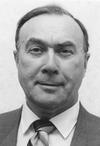One vote can decide presidential elections

Although the voters were not exactly John Q. Public, four times in the nation’s history the presidential election has been decided by one vote, those attending the recent Phi Alpha Theta History Fraternity program at Chadron State College were told.
CSC History Professors Allen Shepherd said that in 1800, 1824, 1876 and 2000, one vote, or at least the influence of one man, decided who would become president of the United States.
The first of the disputed elections was extremely complex and was decided in two stages, with the electoral votes from New York resolving the issues both times, Shepherd explained. John Adams and Charles Pinckney represented the Federalist Party and Thomas Jefferson and Aaron Burr the Democratic-Republican Party.
Burr, who was from New York, led the decision to decide the first deadlock by delivering that state’s electoral votes to Jefferson. However, Jefferson and Burr had the same number of electoral votes and a decision had to be made to determine which was going to be president. The other would become the vice president. This time, another New Yorker, Alexander Hamilton, who had deep hatred for Burr, used his influence to swing the votes to Jefferson.
Four years later, Burr killed Hamilton in a duel, something that was not uncommon in those days between political archrivals, Shepherd said.
The second hotly-contested election was in 1824, when John Quincy Adams was elected president. Speaker of the House Henry Clay, who was also a candidate for the nation’s top job, cast the deciding vote because, in Shepherd’s words “even though he did not like Adams, he liked Andrew Jackson less.”
The election was complicated. Four men were on the ballot and none of them received a majority of either the popular vote or the electoral vote. Before the issue went to the House of Representatives, Jackson led with 43.1 percent of the popular vote and 99 electoral votes. Adams was next with 30.8 percent of the popular votes and 84 electoral votes. In addition, Clay had 13.2 percent of the popular vote and 37 electoral votes and William Crawford 13.1 percent of the popular vote and 41 electoral votes.
“One vote, the vote of Henry Clay as speaker of the house, made the difference this time,” the CSC history professor said.
The third election decided by one vote saw Rutherford B. Hayes edge Samuel Tilden by a single electoral vote in 1876, when a special commission was appointed to decide the election outcome.
Following the election, Tilden had 184 electoral votes, just one fewer than he needed to take office. Hayes had 165 electoral votes. There were 20 disputed electoral votes from Florida, Louisiana and South Carolina. The special commission voted 8-7 along party lines to give the contested votes to Hayes. The last appointee to the commission, Supreme Court Justice Joseph Bradley, is credited with casting the deciding vote.
The Bush-Gore election four years ago also was decided by one vote; a 5-4 decision by the U.S. Supreme Court, which cited the equal protection clause in the Constitution in ruling that thousands of disputed ballots in Florida should not be recounted. Thus with nearly six millions votes cast in Florida, Bush officially won the election by 537 votes and gained the state’s 25 electoral votes to win the election.
“Again, one vote made the difference,” Shepherd pointed out. He added that the five justices who voted in the majority were appointed by Republican presidents. The four who dissented were appointed by Democrats.
When asked how he thinks the 2004 election will come out, Shepherd didn’t take the bait. He said historians have learned long ago never to make predictions.
Category: Campus News
